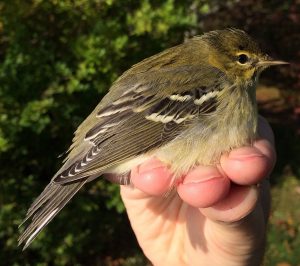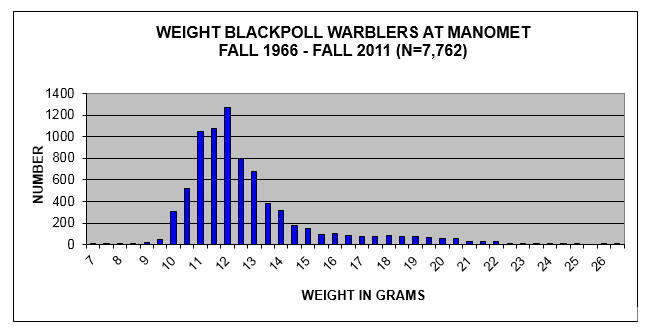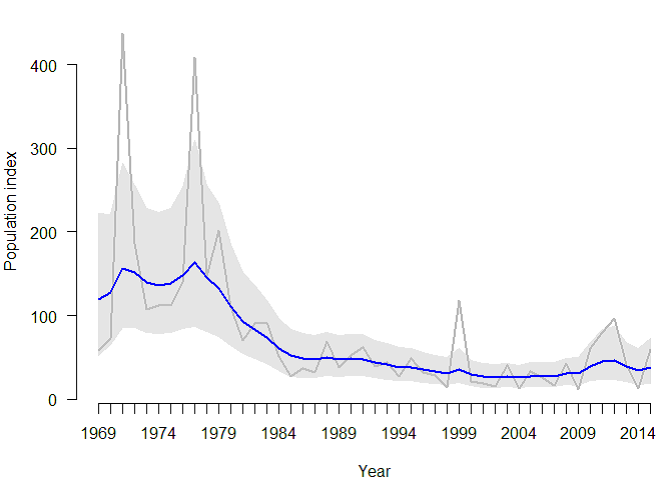At a time redolent with concern about the decline of many bird species, particularly Neotropical migrants, we have a bright spot to report on this year: a recent increase in the number of fall Blackpoll Warblers captured at our banding station. This news is encouraging because numbers of Blackpoll Warblers have been in rapid decline over the past several decades.

Statistically speaking, we have good samples of Blackpoll Warblers (BLPW to the banders); since 1966, the Banding Lab has processed 1,215 individuals in spring and 8,851 in fall. In fact, Blackpoll comes in just behind Yellow-rumped Warbler as our second most common warbler species (seventh most common species overall) banded at Manomet. We should pause here to remind ourselves that BLPW breed exclusively in the great northern boreal forest, mainly in spruce, fir, and tamarack. This breeding range stretches from far western Alaska through the central forests of the western Canadian provinces to Hudson’s Bay and the northeast Maritime provinces of Canada south into the Adirondacks of New York and northernmost mountains of New England.
During fall migration, all of these birds fly to the US east coast and fatten up on the abundant autumn berry crops from New England south into the mid-Atlantic. Then they largely vanish from the ken of North American birders until they arrive in the mid-spring. It had long been theorized that BLPW, unlike other Neotropical migrants that make their way south along the Atlantic coast, take a more extreme route far out over the Atlantic Ocean. Manomet banding data show some BLPW arriving on-site at 10 grams (g) and, if the berries are as abundant as they were this fall, individuals may stay as long as two weeks+, gaining up to 2g per day of fat before disappearing. Our graph of weight distributions shows that some birds quite literally double their weight during their stay here and may weigh over 20g before departing.





 Back to all
Back to all


